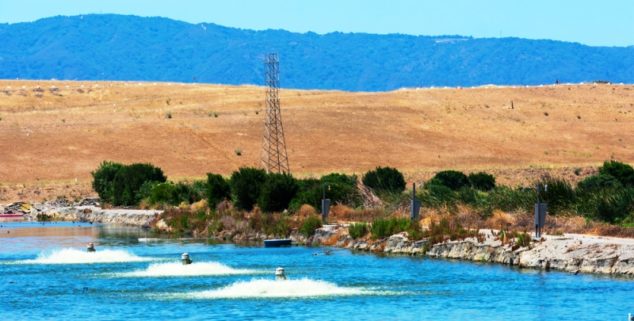News
Water treatment systems not up to snuff, auditor says
 Pumps aerate and filtrate contaminated water at a treatment facility.(Photo: Michael Vi, via Shutterstock)>
Pumps aerate and filtrate contaminated water at a treatment facility.(Photo: Michael Vi, via Shutterstock)>Already battered by drought, dwindling supplies and climate change, California’s water treatment systems also suffer from problems that raise the specter of long-term health issues, according to a state report.
Those findings – and others – were contained in an audit by Michael Tilden, California’s acting state auditor. The audit, released in July, focused on the State Water Resources Control Board (better known as the Water Board), which regulates the condition of water across California.
Despite the State Water Board’s celebration of the 50th anniversary of the Clean Water Act, the legislation that protects clean state water, Tilden’s audit found that the state of clean water across California needs improvement.
The audit also found that two-thirds of the failing systems that exceed the state’s MCLs are found within disadvantaged communities with “significant financial need.”
The report noted that due to failing water treatment systems, nearly a million Californians may face long-term health problems, ranging from liver and kidney issues to a higher risk of cancer.
Within the audit, Tilden notes that “the board has generally demonstrated a lack of urgency in providing this critical assistance,” as well as the fact that the Water Board’s “lack of goals and metrics for its application process has likely contributed to this lengthening time frame and has inhibited the board’s ability to identify aspects of its review process that it could improve.”
The Water Board set a list of maximum contaminant levels (MCLs) to monitor over 100 harmful substances within drinking water in 2018. The 2022 audit found that over 370 water systems exceed the state’s maximum contaminant levels. Despite California law stating that public water systems must report on the condition of their water annually, the state audit found that 150 of these water systems have been failing for the past five years.
The audit also found that two-thirds of the failing systems that exceed the state’s MCLs are found within disadvantaged communities with “significant financial need”.
Amid the drought, water inequality has been a rising concern across California.
Research by UCLA found that water bills for the same amount of water in different areas across California ranged from $200 to $1,500 among families. This disparity among the cost of drinking water continues to hit “low-income people extra hard”.
In a 2021 poll by The Guardian, findings showed that water systems in Latino, rural, and low-income communities often fail to meet clean water standards. The poll found that in the Central Valley town East Orosi, nitrate levels in water were found to be 15 times higher than the standard, and groundwater has been contaminated for over ten years.
General findings of The Guardian’s poll found that clean water is unevenly distributed according to race and financial status, a fact backed up by the state audit in striking proportions.
The results of Tilden’s audit have placed pressure and accountability on Gov. Newsom and the State Water Board. Max Gomberg, the climate and conservation manager of the board, resigned July 28, and complained that Newsom and the board failed to act aggressively to counter California’s long standing water problems.
The audit noted that while the Water Board has funding that could be applied towards fixing failing water systems, there are delays in distributing the funds. The time taken by the board to submit applications for funding to improve water quality has risen from 17 to 33 months over the past five years, the audit noted.
The Water Board responded to the audit, noting that “it will work to implement many of the report’s recommendations, where feasible, especially those which build upon preexisting process improvements already underway.”
Despite this, the Water Board requested “an adjustment to the inaccurate title of the report” regarding blames for demonstrating a general lack of urgency toward the water crisis. The Water Board followed its response by explaining its preexisting Safe and Affordable Funding for Equity and Resilience (SAFER) Program that has been monitoring and aiding the water crisis across the state. The Water Board noted that due to the SAFER Program, 650,000 Californians gained access to safe drinking water over the past 3 years.
Tilden’s report urged the Legislature to hold the board accountable by closely monitoring its goals and performance.
—
Editor’s Note: Lola Watts is a Capitol Weekly intern from UC Santa Barbara.
Want to see more stories like this? Sign up for The Roundup, the free daily newsletter about California politics from the editors of Capitol Weekly. Stay up to date on the news you need to know.
Sign up below, then look for a confirmation email in your inbox.

Leave a Reply